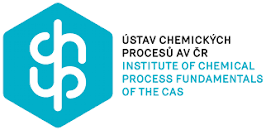Laboratory ofPHOTOCHEMISTRY
Our research team focuses on photochemical, photocatalytic and photoelectrocatalytic processes. Within these research directions, current topics are mainly the study of photocatalytic properties of thin films of oxide n-type semiconductors (TiO2, WO3) in mineral, hybrid organo-mineral (oligomeric siloxanes) and organic binders, applied as self-cleaning layers for exterior use. Furthermore, the study of photocatalytic and photoelectrochemical properties of thin films of these oxides leading to sensor applications such as UV electrochemical sensor. Currently, attention is turning to promising semiconductors at the interface between organic and inorganic materials (graphene oxide, graphitic carbonitride) and also thin film sensors for gases such as ozone, ammonia, etc.
The subject of study is not only material dependencies, but also optimization and scaling of thin film preparation processes from laboratory scale to quarter- and half-scale using material printing techniques. Printed functional semiconductor layers are tested in laboratory and quarter-scale photochemical reactors, and we study the kinetics of these processes. Significant emphasis is placed on the application of research findings, which is reflected in the large number of projects solved in collaboration with industrial partners.

prof. Ing.
MichalVeselý
CSc.
Contact person
+420 54114 9305; +420 54114 9300; +420 54114 9404
michal.vesely@fch.vut.cz
-
Research group
-
Research scope
- Our research and development team is strongly focused on applied research and collaboration with industry. We have extensive experience in putting research results into production practice. We offer opportunities to collaborate in the following research sectors:
- Semiconductor photocatalysis
- Electrophotocatalysis
- Photopolymerisation and resists
- Photostability and photodegradation
- Photometry and radiometry
-
Selected projects
- Research and development of advanced thin film sensors for direct monitoring of the time variable by means of preciously calibrated colour change
- Printed flexible electro-photocatalytic system based on organosilicate binders for removal of organic pollutants
- Methodology for assessing the functionality of antimicrobial photoactive surfaces from a public health protection perspective
- Advanced element for archival documents identification
- Permanent protection of touch screens to prevent the deposition of organic pollutants on their surface
- Printed sensor systems for quality control of sensitive products
- Advanced thin film photocatalysts on a basis of graphitic carbon nitride
- Innovative surface treatments with reduced risk of infection transmission
- Other projects
-
Selected publications
- Structural and physical characterization of iron-oxide based inks for inkjet printing
- Atmospheric Dry Hydrogen Plasma Reduction of Inkjet-Printed Flexible Graphene Oxide Electrodes
- TiO(2 )anatase and rutile grains and the effect of particle printing on porphyrin adsorption
- Low-Temperature Mineralisation of Titania-Siloxane Composite Layers
- Perovskite Solar Cells with Low-Cost TiO2 Mesoporous Photoanodes Prepared by Rapid Low-Temperature (70 degrees C) Plasma Processing
- Solar photocatalytic disinfection using ink-jet printed composite TiO2/SiO2 thin films on flexible substrate: Applicability to drinking and marine water
- Other publications
-
Services offered
- Preparation of functional materials and precursors of semiconductors, conductors and insulators in the form of micro- and nanoparticles by top-down, bottom-up and a combination of both techniques
- Complete characterization of particulate materials
- Development of binders and solvent systems
- Design of printing and coating formulations
- Deposition of liquid phase layers by coating and material printing techniques
- Processing of prepared layers (drying, curing, porous finishing)
- Up-scaling of printing and coating processes to quarter- and half-run scales
- Related analytics: physicochemical properties of surfaces, layers
- Actinic radiation sources, reactors
- Photoinduced biocidal effects
OUR PARTNERS:








